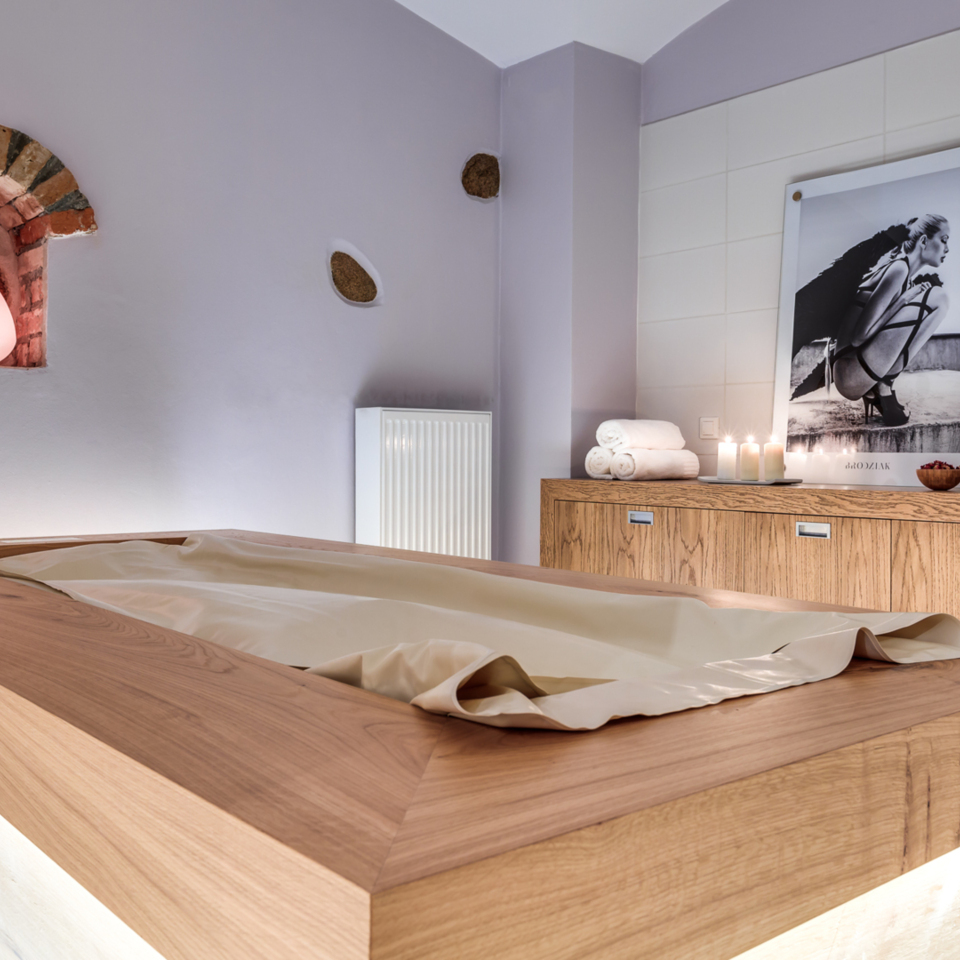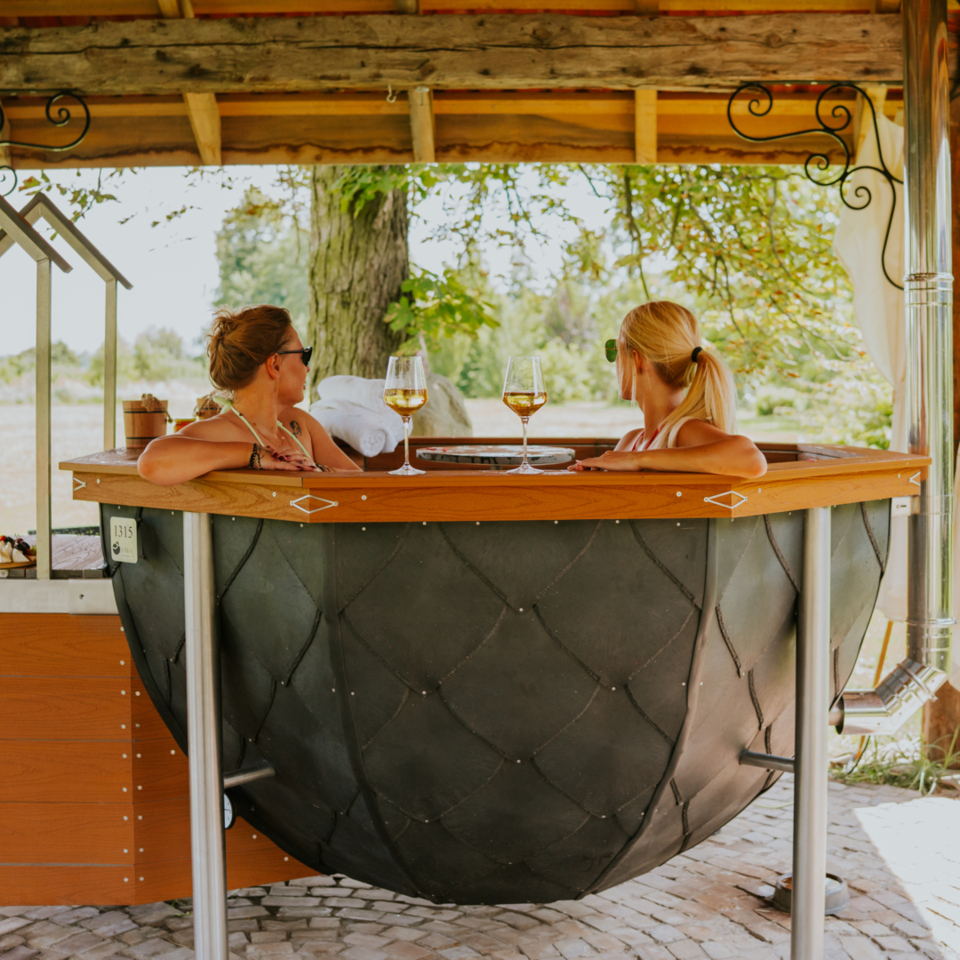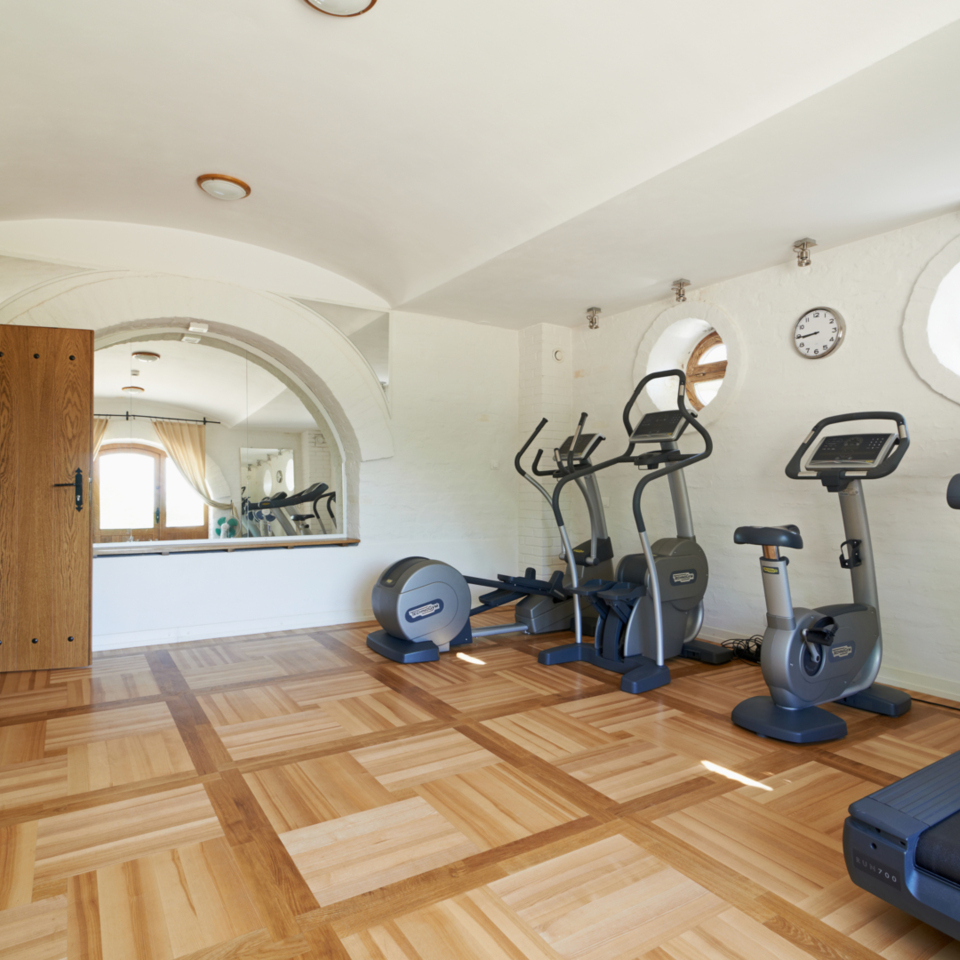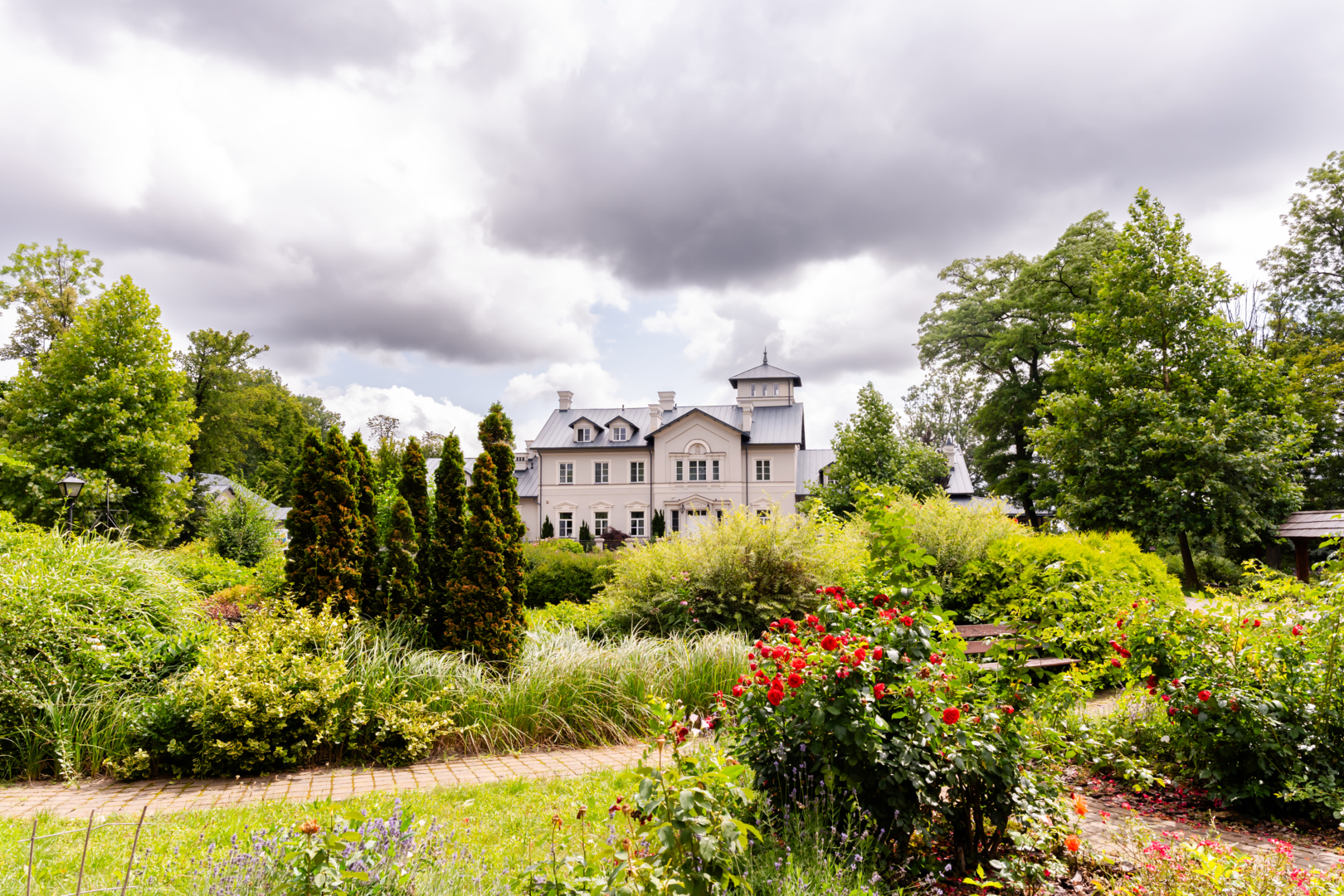Your exclusive & excellent holiday!
Welcome to Talaria Resort & SPA. Let us, the Talaria Resort & SPA team, be your guides to this unique place. Our intention was for Talaria to be more than just an exclusive Wellness & SPA facility, and that is exactly what it is.
We have created a place that is unique in every way – an oasis and a refuge where you can hide from the world, recharge your batteries, seek advice from specialists, finish one of your unread books or simply laze around. We believe that we all need a break from our daily responsibilities. And we deserve such moments – even longer ones, during which we can take care of our fitness, health and beauty, learn something new or simply gossip. Or maybe think while lying on the grass or work out at the gym, relax with a massage, nourish your skin or get rid of a few wrinkles?

Talaria is a unique place. On weekends, only women can relax here! We warmly welcome men and entire families from Sunday afternoon to Friday noon. During these days, we host corporate groups and conferences. Unrestricted relaxation allows you to move around the entire facility in your bathrobes all day long!
WEEKENDS AT THE TALARIA HOTEL
Only women
Children – from 1 September 2023, on weekends exclusively for women at Talaria, we will only be hosting girls over the age of 12. During co-ed periods and from Sunday (from 3 p.m.) to Friday (until 11 a.m.), we welcome entire families. Children under 3 years of age stay free of charge (they sleep in their parents' bed or in a travel cot and use their parents' facilities), and generous discounts for older children are 50% for children aged 3 to 6 and 30% for children up to 12 years of age. Due to the nature of the facility, please understand that, apart from special packages, we do not offer attractions or childcare. Children are welcome in the SPA area under the supervision of their parents. On weekends, Talaria operates on a FOR LADIES ONLY basis.

Now let's take a short tour of the complex:
The heart of Talaria is a carefully restored 19th-century palace with a hotel, restaurant and spa area. We offer our guests 53 unique and comfortable rooms. Their appeal lies not only in their comfortable and stylish furniture, but also in the concept behind their design. The interiors and their furnishings were inspired by the interests, achievements and personalities of famous people, giving them a unique character. By combining modernity with restored furniture and functional gadgets, we have managed to create extraordinary rooms. One of the palace's gems is the spacious First Lady restaurant with a fireplace. The Tower of Dreams offers a view of the entire area. In the Park Pavilion, we have prepared 16 rooms and a stylishly decorated fireplace room, which also serves as an atmospheric training room. The Pavilion of the Elements is a building inspired by the changeability of the weather and the environment, where we offer our guests 20 rooms, whose names and furnishings are inspired by the power of Earth, Air and Water.
In the catering area, we invite you to three palace restaurants – Sophie, Susanne and First Lady, the Catherine Bar, the Carpe Diem library and the Orangery adjacent to the palace, which also serves as a conference and event hall for 180 people..
We are delighted to present the My SPA Zone, which comprises three areas:
Wellness Area
consisting of a swimming pool (11m x 4m x 1.30m deep), a jacuzzi (2.5m x 6m), a relaxation area with a view of the garden and fountain, a hammam (with a steam bath, salt peeling area, cleansing and relaxation area), a sauna complex (a sensory zone with a stone sauna, a cooling sensory path, an infrared sauna), a herbal cottage (an aromatic relaxation zone, wonderful inhalation, as well as relaxation for the spine and health with a 40-degree hay sauna).

SPA zone
with thirteen treatment rooms for beauty, body and facial treatments. These include: Soft Pack (body wraps in a tub where you float on water), Quarz (massage bed on warm sand), and a hammam area.

przestrzeń relaksu na zewnątrz
Country SPA
wanna termalna, my Bania, Domek Pszczół (apiterapia), Zaścianek - strefa grilla i ogniska, kajaki i łódki, pikniki, wędkowanie.

Activity area
cardio room, outdoor sauna -my Bania, pool table..

PFR - Tarcza Finansowa 2.0
Trojanów sp. z o.o. announces that it has received financial support from the Polish Development Fund under the Tarcza Finansowa2.0 for micro, small and medium-sized enterprises.
The history of the Trojanów Manor House
Where did we get the idea for the name?
The name ‘TALARIA’ refers to the ancient Greek term for ‘winged sandals’ – a symbol of Hermes, the god of messengers. ‘TALARIAE’ were synonymous with comfort, convenience and ease of walking on the bumpy roads and paths of life.

The Legend of Talaria
Numerous legends surround the Palace in Trojanów... Is there a grain of truth in this one, or perhaps more?
This story unfolded in the 1920s in Trojanów, near Ryki, specifically in the palace itself, whose history stretches back to the early 15th century. The earliest preserved records indicate that at that time, Trojanów belonged to Mikołaj Powała of the Ogończyk coat of arms, a renowned knight known, among other things, for the Battle of Grunwald. In 1448, the Trojanów estate passed into the hands of Fiebron of Gutanów, and then, in the 16th century, into the possession of the Trojanowski family. In 1872, Bronisław Józef Ordęga, the eldest son of the deceased Alfons Ordęga, inherited the estate. Bronisław established the still-existing fishponds that surround the palace and park. The current palace dates back to 1868. It was likely designed by Bolesław Podczaszyński and built in the Neo-Renaissance style, composed in the form of an irregular Italian villa. Its owner, Bronisław Józef Ordęga, died in 1922, naming his son Stanisław Maciej Ordęga as his heir.And here begins the story, or perhaps legend, passed down from generation to generation by the local people. For it is an extraordinary, romantic, yet tragic tale. At the time, it caused immense commotion throughout the landowning circles.A Forbidden Love and a Tragic EndIt so happened that Stanisław once met a woman who would later become the source of all his misfortunes. Probably because, as the folk tale goes, she was... a Gypsy. Stanisław first saw her one summer day when a Roma camp arrived in the vicinity of Trojanów. Out of curiosity, the young heir went to the forest edge in the evening to watch the women dancing by the campfire. He simply couldn't take his eyes off one of them. He was captivated by her at first glance, or perhaps it was even love at first sight. Her name was Tarusza. Stanisław Polonized her name to Teresa, and after a few more evenings, he took her and brought her into the palace.Unfortunately, this was completely unwelcome to his mother, who explicitly demanded that Stanisław abandon Teresa. But he, deeply in love with the girl, enchanted by her extraordinary beauty, would not even consider it. What's more, as the atmosphere in the palace became unbearable over time, he took his beloved Teresa and left for... Paris. Likely planning a long stay in the French capital, he had, before his departure, entrusted his mother with a full power of attorney for the duration of his absence.During Stanisław's absence from Trojanów, his mother, possessing unlimited power of attorney, transferred the palace, along with the adjacent properties and all of her son's assets, to herself, thus becoming their new owner. When Stanisław returned to Trojanów with Teresa and found what he found, he began to reclaim what was rightfully his. Unfortunately, one day, with the assistance of the police, and acting within her legal rights, he was expelled from the palace by his own mother.He returned in the evening, on January 2, 1930. He entered the palace and demanded to speak with his mother. During their conversation, the son again demanded that his mother return the estate, but she would not listen. An argument ensued. It was then that the enraged mother grabbed a marble bust of Teresa, brought from Paris, standing on the fireplace, and, throwing it to the floor, smashed it into tiny pieces. For Stanisław, this was too much. And when she then ordered her son to immediately leave the palace, he pulled a revolver from his pocket and, with two accurate shots, killed his mother on the spot, then put the barrel of the revolver into his own mouth, pulled the trigger, and killed himself.And Teresa? She became Tarusza once more. With the nearest camp, she departed again into the unknown world, and all trace of her was lost.Echoes in the PresentAfter the deaths of his mother and son, the estate was taken over by Stanisław's sister, Bronisława, and it is her bust that now stands on the fireplace, in the very spot once occupied by Teresa's bust. An old, large portrait of the mother in a gilded frame, however, hangs above the palace's grand staircase, leading to its upper floor and then to the palace tower, from which a vast view of the fishponds and the entire surrounding area unfolds. And what about Stanisław? He is still present in the palace, but more on that a bit later.The Trojanowski family managed the palace until the outbreak of World War II. Then the property was taken over by the Germans, and after the war, it was parceled out. The Gmina Office (local government office) was located in the palace until 1994, when the last officials left the neglected, decaying building. In 2004, a private owner bought it from the Agricultural Property Agency of the State Treasury, and a few years later, in 2015, opened the Talaria Resort & SPA Hotel within it, which functions excellently to this day. Guests seeking peace, relaxation, and health rejuvenation by the water, in the park, in the indoor pool, jacuzzi, sauna, and numerous wellness rooms flock to it. Most of them are women, as the Talaria Resort & SPA Hotel, as the only such facility in Poland, reserves all weekends, except for holidays, exclusively for ladies. They evidently feel good there, as usually all places from Friday to Sunday are occupied.And Stanisław? Perhaps he never truly left his palace. Because, as the current owner of the palace recounts, he makes his presence known time and again. How else to interpret the fact that in the palace rooms, now and then, a chandelier – if not one, then another – falls from the ceiling, including the one hanging in Stanisław's former room? Or, what to say about the large, metal, perhaps brass rose lying under Bronisława's white marble bust, which every now and then spontaneously falls from the fireplace to the floor? Perhaps it's just a coincidence, but a legend has a way of never definitively resolving anything until the very end. And if anyone wishes to ponder this more deeply, I recommend a comfortable armchair in the small room at the top of the observation tower. It is empty and quiet there; one can ponder various matters for a long time. Some even fall asleep there and dream about all sorts of things.
Krzysztof Stankiewicz


